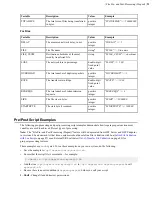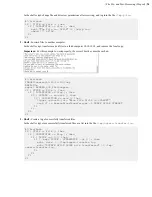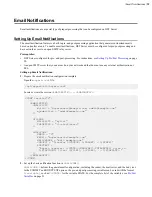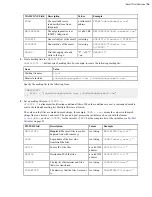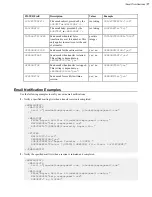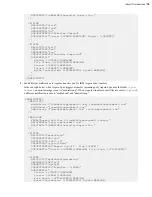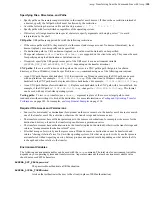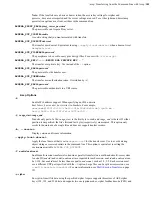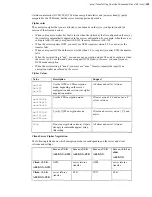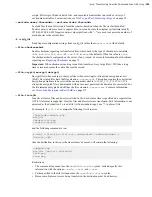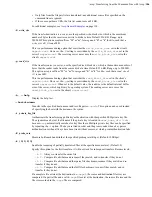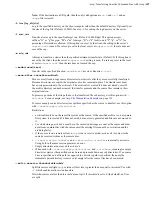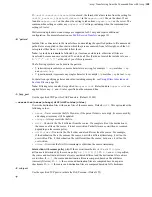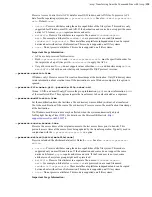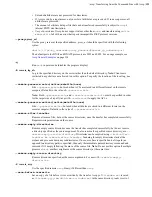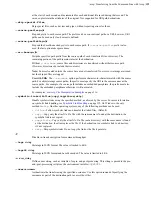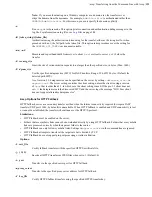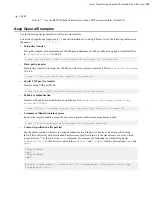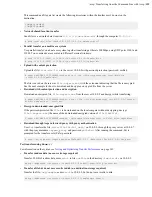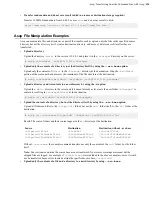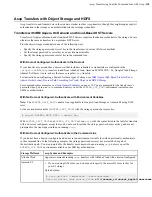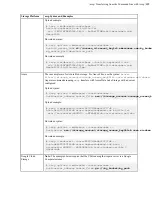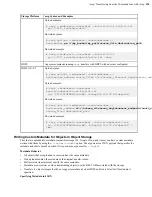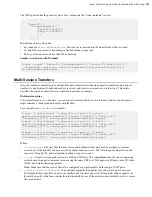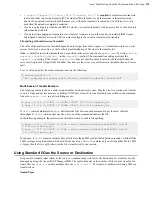
| ascp: Transferring from the Command Line with Ascp |
107
Note:
If the destination is a URI path, then the only valid options are
-k 0
and
-k 1
and no
.aspx
file is created.
-L
local_log_dir
[:
size
]
Log to the specified directory on the client computer rather than the default directory. Optionally, set
the size of the log file (Default: 10 MB). See also
-R
for setting the log directory on the server.
-l
max_rate
Transfer at rates up to the specified target rate. (Default: 10000 Kbps) This option accepts
suffixes "G" or "g" for
giga
, "M" or "m" for
mega
, "K" or "k" for
kilo
, and "P", "p", or "%" for
percentage. Decimals are allowed. If this option is not set by the client, the setting in the server's
aspera.conf
is used. If a rate cap is set in the local or server
aspera.conf
, the rate does not
exceed the cap.
-m
min_rate
Attempt to transfer no slower than the specified minimum transfer rate. (Default: 0) If this option is
not set by the client, then the server's
aspera.conf
setting is used. If a rate cap is set in the local
or server
aspera.conf
, then the rate does not exceed the cap.
--mode={send|recv}
Transfer in the specified direction:
send
or
recv
(receive). Requires
--host
.
--move-after-transfer=
archivedir
Move source files and copy source directories to
archivedir
after they are successfully transferred.
Because directories are copied, the original source tree remains in place. The transfer user must
have write permissions to the
archivedir
. The
archivedir
is created if it does not already exist. If
the archive directory cannot be created, the transfer proceeds and the source files remain in their
original location.
To preserve portions of the file path above the transferred file or directory, use this option with
--
src-base
Ascp File Manipulation Examples
on page 116.
To remove empty source directories (except those specified as the source to transfer), use this option
with
--remove-empty-directories
.
Restrictions:
•
archivedir
must be on the same file system as the source. If the specified archive is on a separate
file system, it is created (if it does not exist), but an error is generated and files are not moved to
it.
• For cloud storage,
archivedir
must be in the same cloud storage account as the source and must
not already contain files with the same name (the existing files cannot be overwritten and the
archiving fails).
• If the source is on a remote system (
ascp
is run in receive mode),
archivedir
is subject to the
same docroot restrictions as the remote user.
•
--remove-after-transfer
and
--move-after-transfer
are mutually exclusive.
Using both in the same session generates an error.
• Empty directories are not saved to
archivedir
.
• When used with
--remove-empty-directories
and
--src-base
, scanning for empty
directories starts at the specified source base and proceeds down any subdirectories. If no source
base is specified and a file path (as opposed to a directory path) is specified, then only the
immediate parent directory is removed (if empty) after the source files have been moved.
--multi-session-threshold=
threshold
Split files across multiple
ascp
sessions if their size is greater than or equal to
threshold
. Use with
-C
, which enables multi-session transfers.
Files whose sizes are less than
threshold
are not split. If
threshold
is set to 0 (the default), no files
are split.

